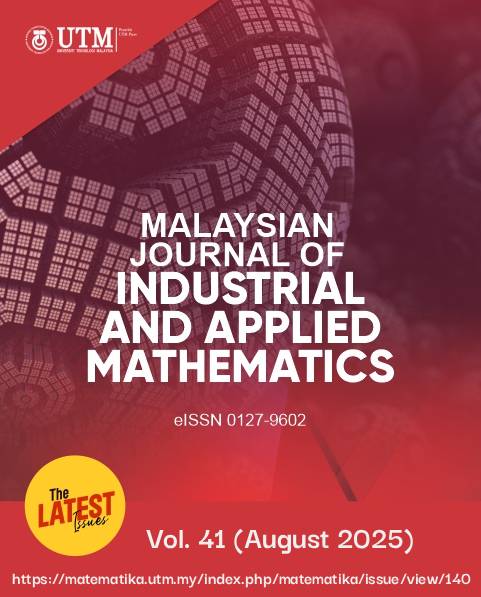Optimizing Food Manufacturing using Hybrid DES-DEA techniques: A Case Study at a Bean Curd Puff Factory
DOI:
https://doi.org/10.11113/matematika.v41.n2.1664Abstract
The competitiveness and expansion of small and medium-sized business (SMEs) engaged in food manufacturing is restricted by ineffective food production systems. This paper applied discrete event simulation to construct and simulate a representation of a food production line which enables better management and performance enhancement. The simulation results inform three improvement models (IMs) designed to reduce bottlenecks by adjusting operator allocation and soybean entry intervals. Data Envelopment Analysis (DEA) with the Banker, Charnes, and Cooper (BCC) output-oriented model is employed to determine the efficiency score of each improvement scenario. Additionally, Cross efficiency and Super efficiency BCC methods are used to rank these strategies, aiding in the selection of the best improvement model to maximise total production and average resource utilisation. This study found that IM1 which involves Operator 1 managing the grinding and coagulation process, Operator 2 handling the filtering and moulding process, and Operator 5 being assigned to the cutting process with a 15-minute interval between soybean entries selected as the most effective improvement model. IM1 significantly reduces the average cycle time by 30.25%, increases total production output from 144 kg to 198 kg and achieves a modest increase of 5.91% in average resource utilisation. This study demonstrates the value of discrete event simulation and DEA in operational decision-making by providing strategies that help in identifying and eliminating bottlenecks and optimise the food production process. The findings contribute to improve the competitiveness of SMEs by providing a reproducible framework for optimising production efficiency and resource usage in food manufacturing systems.


















